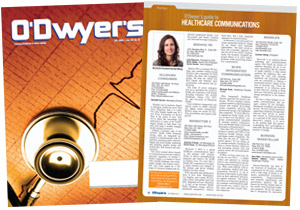|
|
Shaping and conditioning the marketplace for a therapy prior to its approval and launch was once almost entirely focused on establishing medical need. While building a science case for treatment need is still important, formulating an argument for marketplace value is critical. There’s little doubt that healthcare will be increasingly influenced — if not dominated — by discussions surrounding cost and value. Nearly all governments have stepped up their efforts to contain spending.
In the US, patient co-pays are on the rise and physician sensitivity to pricing has never been more pronounced. In some categories like oncology, it’s rare to see a discussion about treatment that doesn’t include tough questions on price, with the battle lines being drawn along the communications front.
As with most medical decision-making, perceptions around pricing are not based merely on facts, data or statistics. Subjective measures rooted in empathy, context, experiences and ideas are important, and can vary in influence based on marketplace and situation. In today’s highly scrutinized, cost-conscious environment, making those arguments and influencing value perceptions must be done well before a new drug enters the marketplace.
|
|
Recent value-centered media coverage underscores the premise that it’s not all about data and offers insights into how to build a solid case and storyline. Here are a few examples:
It’s about patients
“I can’t wait to be average,” said cancer survivor Bob Tufts in a recent Huffington Post blog. “If I had been forced into accepting the prognosis of a medical professional more interested in wearing a green eye shade (i.e., an accountant) than a doctor’s white coat, I would not be alive today.” Tufts, a former Major League Baseball pitcher and now professor, has called for more involvement in the discussion from patients who too often are dehumanized and reduced to statistical averages.
Focus on the big picture
“We cannot let the system bankrupt the country, that we all agree,” argued Dr. Andrew L. Pecora in a recent NJ.com story headlined, “Reining in the Total Cost of Cancer Care — It’s More Than Just Drugs.” Dr. Pecora noted that “ ... the idea of only controlling drug costs is dangerous because it does not address the big picture, nor is it tied to patient outcomes.” Dr. Pecora, a Chief Innovations Officer, professor and Vice President of Cancer Services at John Theurer Cancer Center at Hackensack University Medical Center, makes a compelling case for assessing drugs within the broader context of care.
Experiences matter
Appreciating and talking about the importance of patient outcomes over time is critically important, according to Thomas Goss who recently penned an article in Genetic Engineering and Biotechnology News that focused on real world experience in cancer care. “In recent years, the United States has witnessed significant progress in the fight against cancer, with a five-year survival rates increasing from 49% in the mid-1970s to 68% today,” Goss points out. “Improved therapies have contributed significantly to these advances in cancer care, with one study reporting that new medicines have accounted for between 50% and 60% of the increase in cancer survival rates since 1975. The progress driving these advances is commonly the result of an accumulation of knowledge over time, as a greater understanding of the science underlying the more than 200 diseases we collectively call cancer grows.”
At dna Communications, we’ve had the opportunity to work closely on the “value story” for several years. It is part of a deep expertise we have in building a value case for important therapies whose costs are called into question and where market access is in question. In such cases, our objective has been to influence the conversation and incite urgency among stakeholders — even if that means causing controversy among naysayers. All along the way, we’ve used patient outcomes and economic impact data, when available, to make a balanced case for saved lives and societal and economic value.
Customizing campaigns to accommodate for market situations, brand attributes and current marketplace is important, as is listening to reactions to messaging, proof points and packaging.
Our strategic approach is grounded in our experience of what works on a foundational level. That foundation is built on four strategic pillars:
Empathy. Put Patients First: Keep them at the center of the discussion. Emphasize the value of the therapy through patient stories that clearly demonstrate the value of positive health outcomes, no matter how incremental the gains might be. Innovative medicines often offer patients the best option, no matter what the cost.
Context. Sell the Need: Clearly establish the need and role of a new therapy. Build the case for unmet need. Draw attention to the economic and societal benefits of an effective medication.
Experience. Raise the Volume through Facts, Data and Credible Partners: Support rationale via data and facts, when available. Partner with advocacy and experts. Broaden the expert pool beyond healthcare professionals to include health economists, academics, policy influencers and advocacy groups with aligned interests outside of the disease specifically. Aligned advocacy examples might include organizations focused on gender issues (if issues are relevant to men or women, specifically), labor interests (if productivity or economic factors matter) and science and academic groups or publications (if innovation is at stake). Securing opportunities at think-tank forums like TEDMED can also add to cache and reach the right stakeholders.
Ideas. Challenge the Status Quo: Dare stakeholders to think differently. Reframe the issue. Advance new ideas and perspectives.
For healthcare communicators, there’s an emerging need to be as proficient in economics as we’ve always been in shaping reputation and brand marketing. Building a case for value is critical. Challenging short-sighted price arguments is essential. For public relations, strong data, regulatory approval and brand visibility have always been the essential building blocks for success. Today, you can add economic case-building and value-storytelling to the list.
* * *
Michael Rinaldo is Executive Vice President and General Manager at dna Communications.




 Lo Isidro, senior director at Real Chemistry with more than a decade of strategic communications and PA experience, has joined Narrative Strategies.
Lo Isidro, senior director at Real Chemistry with more than a decade of strategic communications and PA experience, has joined Narrative Strategies. Nelson Fernandez, former North American chair of APCO Worldwide and managing director of Burson-Marsteller, has joined Volunteers in Medicine Berkshires as director of communications and PA.
Nelson Fernandez, former North American chair of APCO Worldwide and managing director of Burson-Marsteller, has joined Volunteers in Medicine Berkshires as director of communications and PA. Lilit Bargar, who was most recently an EVP in the healthcare practice at Weber Shandwick, comes on board at GCI Health as EVP, corporate practice lead.
Lilit Bargar, who was most recently an EVP in the healthcare practice at Weber Shandwick, comes on board at GCI Health as EVP, corporate practice lead.
 Five ways that successful thought leaders are made.
Five ways that successful thought leaders are made.


 Have a comment? Send it to
Have a comment? Send it to 
No comments have been submitted for this story yet.